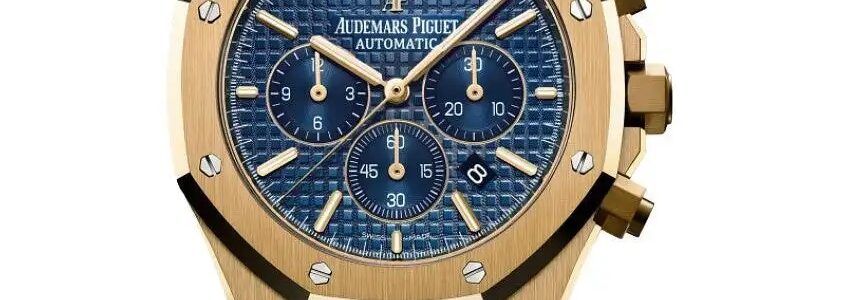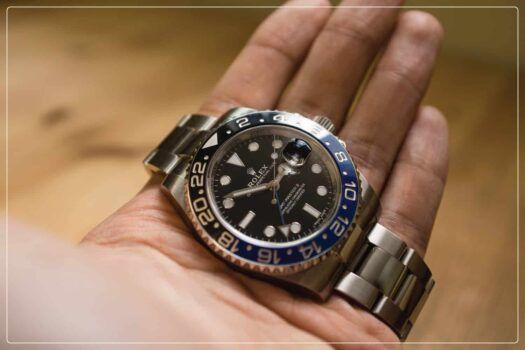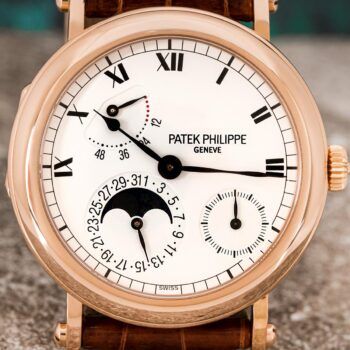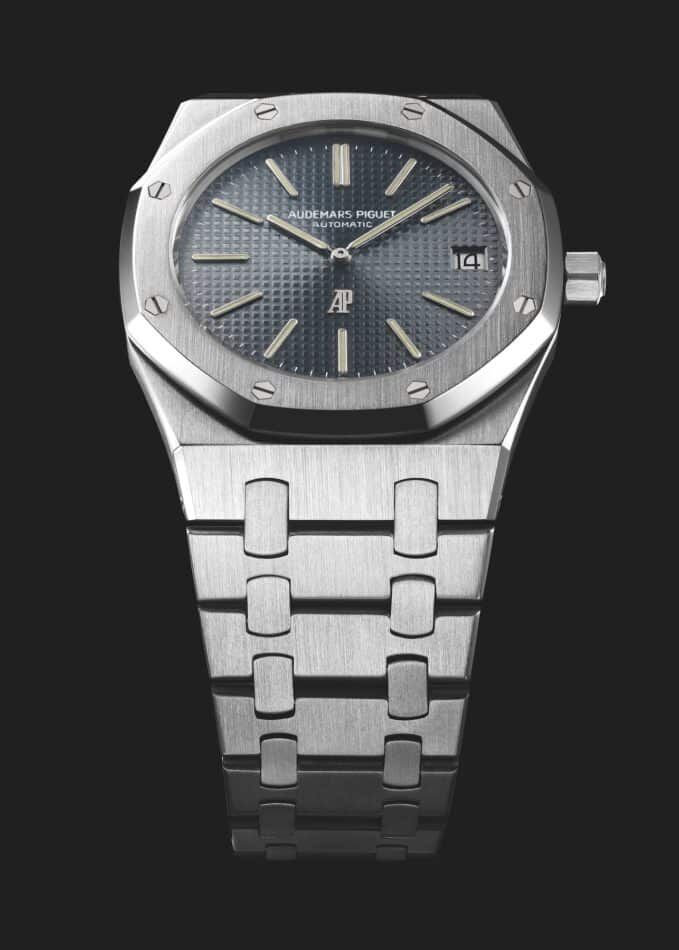
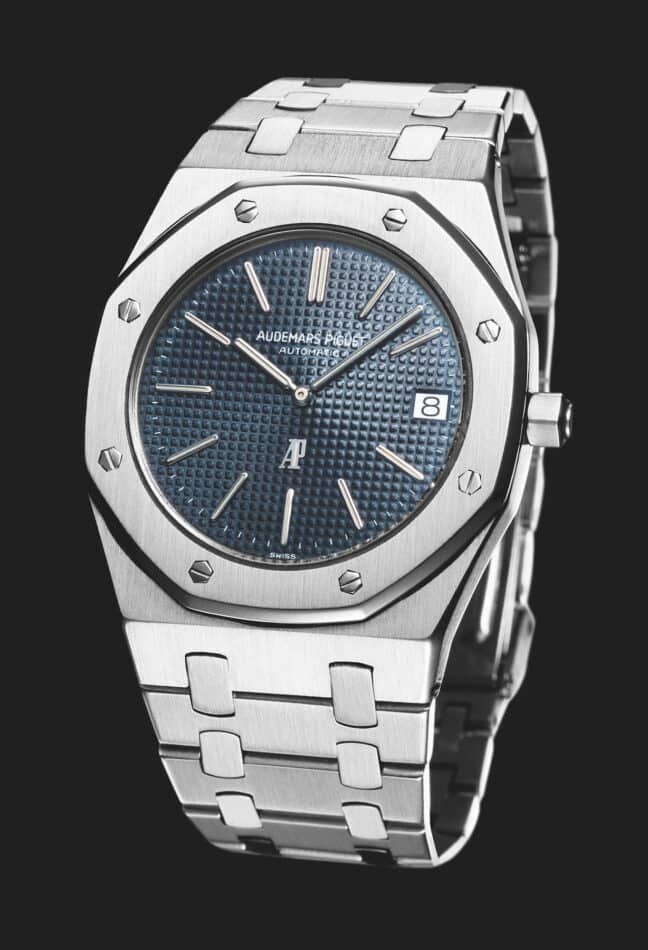
The Audemars Piguet Royal Oak is among the world’s most coveted timepieces, worn by a seemingly endless list of celebrities, including Jay-Z, Drake, Kylie Jenner, Shawn Mendes, LeBron James, Serena Williams and Novak Djokovic.
Its enduring popularity can be largely explained by its sleek, almost industrial design, which combines a sporty feel with watchmaking excellence and a sense of luxury that rises above fashion trends and hype.
The distinctive piece is instantly recognizable thanks to its octagonal bezel, exposed screws, waffle-like Tapisserie dial and integrated bracelet, which extends seamlessly from the case and hugs the wrist. It’s often referred to as an emblem of innovation in the wider universe of product design, one that bridges the gap between audacious originality and measured sophistication.
Introduced in 1972 and heralded as the world’s first luxury sports watch, it has become Audemars Piguet’s flagship model, with more than 550 permutations, each honoring the unique octagonal form of the trailblazing original.
This year, the iconic design celebrates its 50th anniversary. Here, we look into the history of the Royal Oak and why it continues to impress a half century after its game-changing debut.
The Royal Oak Was Initially Named Safari
Legend has it that the Royal Oak was named after a trio of British warships. Sébastian Vivas, heritage and museum director at Audemars Piguet, offers a broader perspective on the story.
“From the first drawing, in April 1970, to mid-1971, the watch was often named Safari internally, and sometimes Excalibur,” Vivas recounts. “On September 3, 1971, a meeting was organized to find a perfect name, evoking sport, wide open spaces and virility. Among the suggestions, we find Grand Prix, Surfrider, Kilimandjaro and Oxford in the archives. All witnesses of the time agree that it was Italian distributor Carlo de Marchi who came up with the name Royal Oak.
“It was brilliant,” he continues. “Royal Oak opened the door to countless interpretations, including naval battles, conquest of oceans, noble armor and saving trees. It recalls the story of Charles II, King of England, who owed his life to an oak tree that had sheltered him from Cromwell’s troops and which he subsequently ennobled — a little like how the watchmakers ennobled the steel by crafting it very finely.”
The Origin of the Audemars Piguet Royal Oak
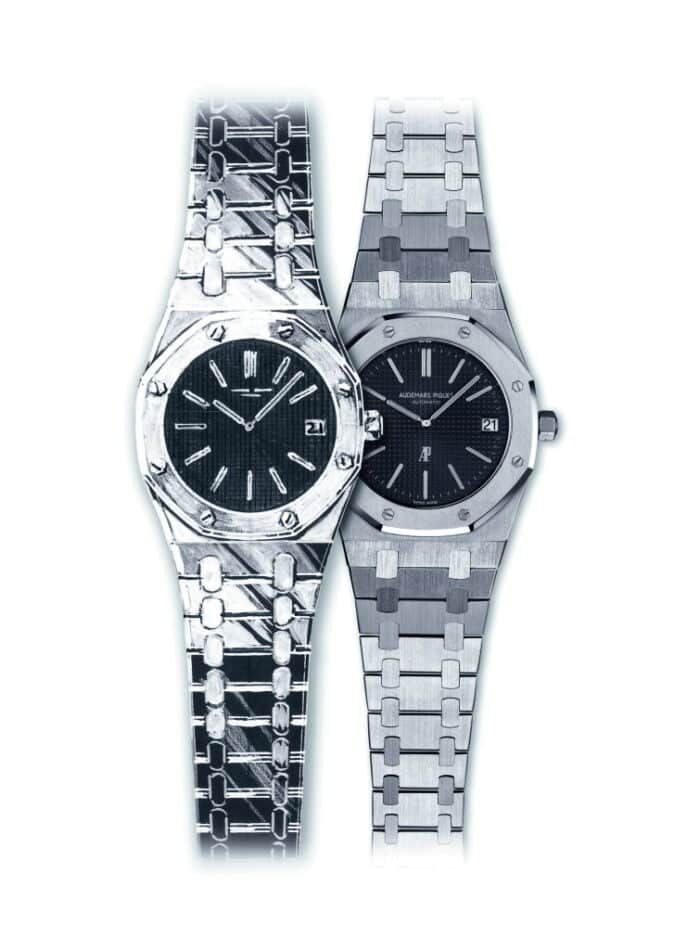
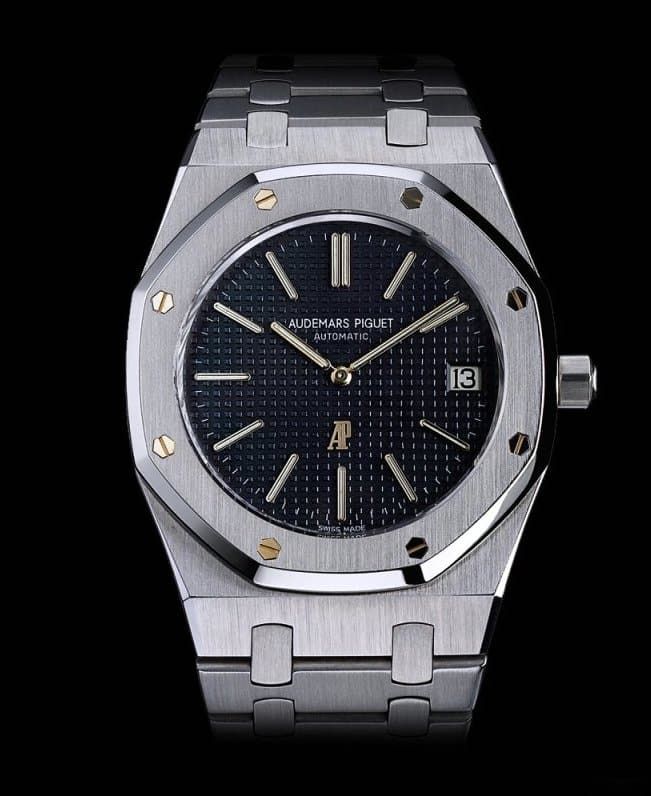
In April 1970, legendary watchmaker Gérald Genta — creator of the Omega Constellation, Patek Philippe Nautilus and IWC Ingenieur, among many other well-known timepieces — was asked by his friend and colleague Georges Golay, then managing director of venerable Swiss watchmaker Audemars Piguet, to think of a radical design to counter the rise of the quartz watch, which was poised to wreak havoc on the Swiss watchmaking industry by swaying consumers toward cheaper, battery-powered steel timepieces.
Golay was adamant that the way to offset this influence was to launch a disruptor that would challenge the aesthetic codes of the time. The proviso was that the design had to be chic, sporty and cast from stainless steel but engineered with the same care and precision as its solid-gold counterparts, with a price tag to match.

Genta rose to the challenge and conceived the original Royal Oak in just one evening, drawing inspiration from classic diving helmets for the watch’s angular face.
Nicknamed the “Jumbo” on account of its 39mm case, which although ultra-thin was considered oversize at the time, the unconventional design galvanized an experimental approach at Audemars Piguet that gave rise to a panoply of Royal Oak styles, with a range of dial colors and sizes.
Variation Becomes Part of the Royal Oak DNA
Because the timepiece’s ultra-thin monocoque case — a cup shape with the bezel screwed to the top — was hewn from a single block of steel, a material that is much less malleable than gold, crafting the watch to a high standard in the early ’70s was a great challenge.
This labor-intensive process meant that the inaugural reference 5402 was made in relatively small quantities. It was an offshoot model inspired by the original’s silhouette that set the wheels in motion for the expansion of the Royal Oak family.
“Georges Golay understood that the 5402, the enfant terrible of high watchmaking, needed time and space to exist and to be accepted,” explains Vivas. “Designed by Jacqueline Dimier and launched in 1976, model 8638 [equipped with a case measuring 29mm] was the very first variation of the Royal Oak. It created a second wave of surprise by becoming the brand’s most masculine watch to be dedicated to women. Its success opened up all sorts of possibilities and demonstrated that the Royal Oak could evolve and become a creative playground.”
Since then, this playground has produced more than 550 models, among them classic, open-work, tourbillon and chronograph styles in a range of materials, including steel, gold, titanium and platinum. In 2016, Italian jeweler Carolina Bucci added texture to the model with her famous versions in frosted gold, a finish achieved through the artisanal technique of Florentine hammering.
The blue hue, known as Bleu Nuit, Nuage 50, that graced the dial of the 1972 “Jumbo” is the emblematic color of the Royal Oak dynasty, although Audemars Piguet has cast its color and texture net wide through the decades.
Vintage models from the ’80s and ’90s with silver or salmon pink dials are particularly in demand, as are gilded varieties with the AP symbol at 6 o’clock, apparently so rare that no examples have been received by AP Customer Service since 2000. But the 39mm stainless-steel “Jumbo” with blue tapisserie dial and ultra-thin movement is arguably the most desirable of them all.

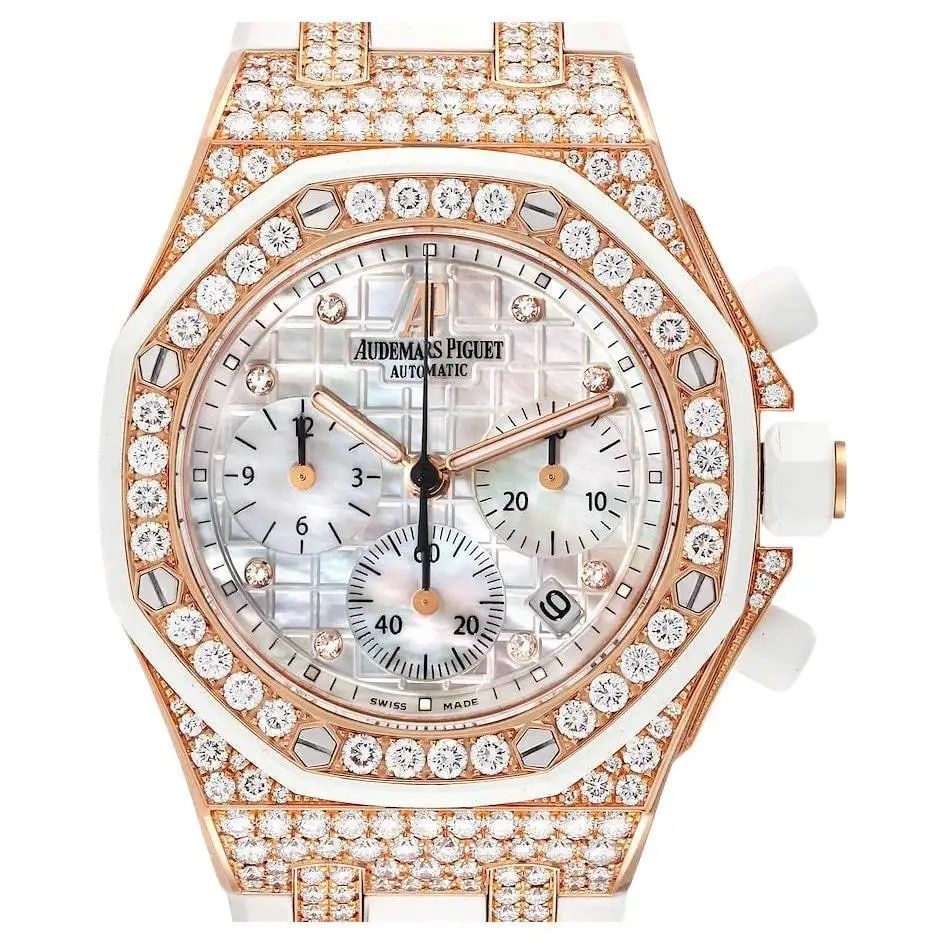
One of the biggest developments in the Royal Oak story occurred in 1993 with the launch of the ultra-sporty Royal Oak Offshore, a heftier take on the original with an average case diameter exceeding 40mm, guided by the bold and powerful aesthetic language of the decade.
Like its predecessor, the Royal Oak Offshore has become a classic, with its own rich history and fully fledged collection of sought-after rarities, ranging from diamond-encrusted editions to sleek, monochromatic chronographs.
The continuing success of both “Jumbo” and Offshore models proves that Genta’s underlying design was ahead of its time — a fact reinforced by the Royal Oak Concept series, first released in 2002. This futuristic permutation, known for its deconstructed architecture and ground-breaking technology, signaled a paradigm shift in the field of horological assembly, impelling brands like TAG Heuer and Hublot to follow suit.
The Key to the Royal Oak’s Longevity
But is design alone what makes the Royal Oak so desirable? While some people ascribe the appeal of a luxury item to an aura or an attitude, Vivas has a more academic take. He suggests that the watch’s currency as an object is rooted in its constant capacity to surprise as its layers are explored.
By way of example, he offers another slice of Royal Oak history. “The German collector and entrepreneur Helmut Crott spent years researching the history of the Geneva dial maker Stern,” Vivas relates. “He found out that the Royal Oak’s famous Petite Tapisserie dial was the result of a rare combination of circumstances.
“When Genta visited Stern to start the development of the Royal Oak dial, Stern had just rescued old machines that were destined for destruction and that nobody was able to operate anymore. Without the passion of the craftsmen who had understood the potential of this lost know-how, without their dedication, the Royal Oak dial would not exist. The process of research is paved with surprises and magic moments such as this.”





